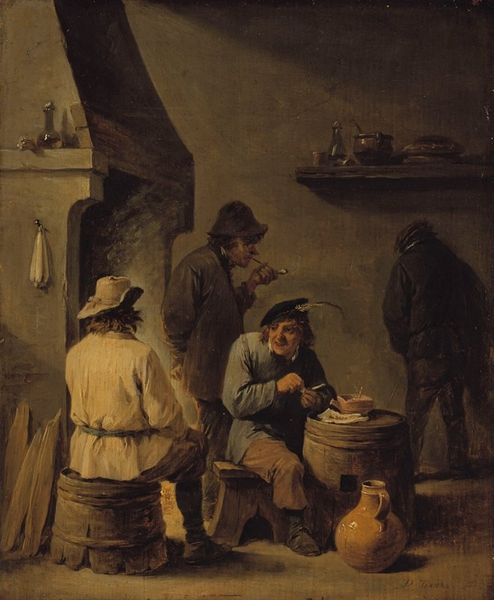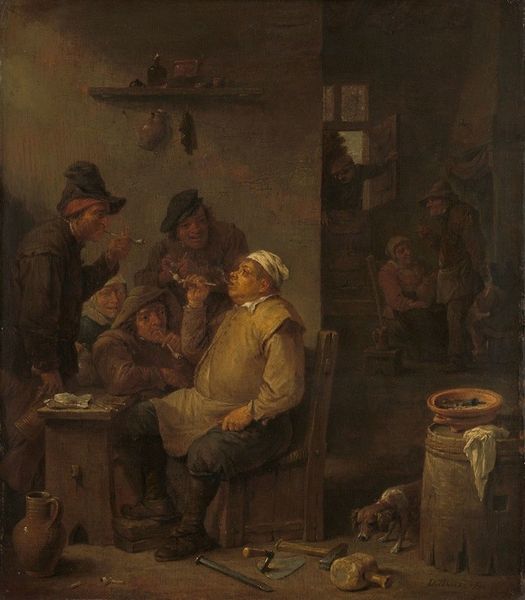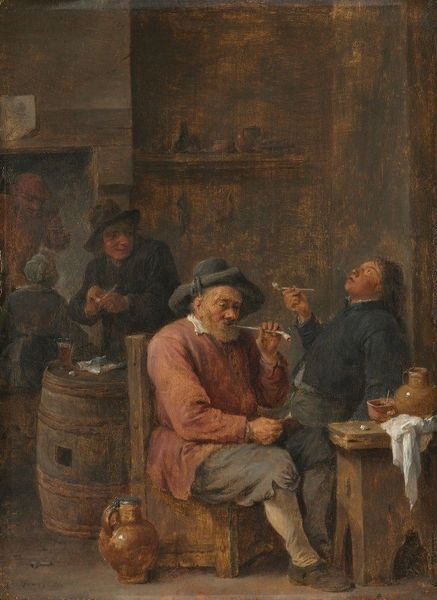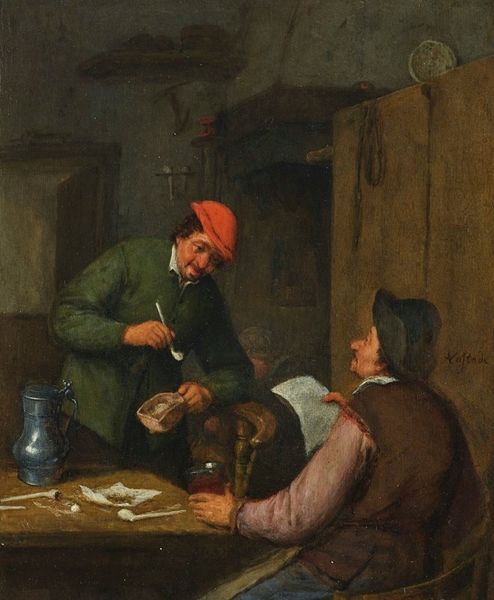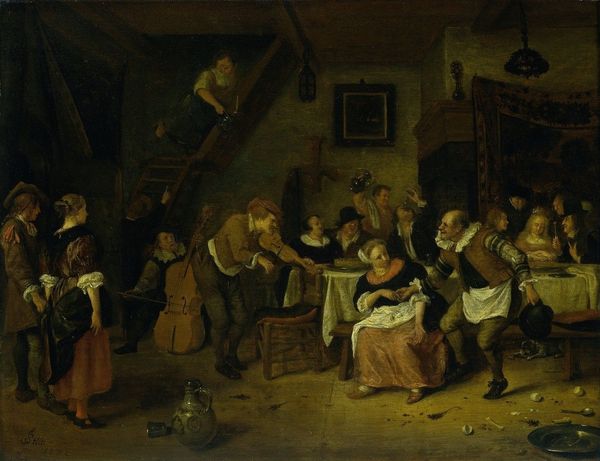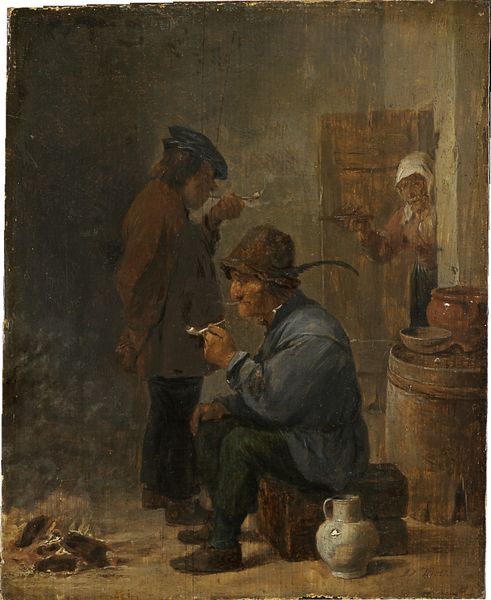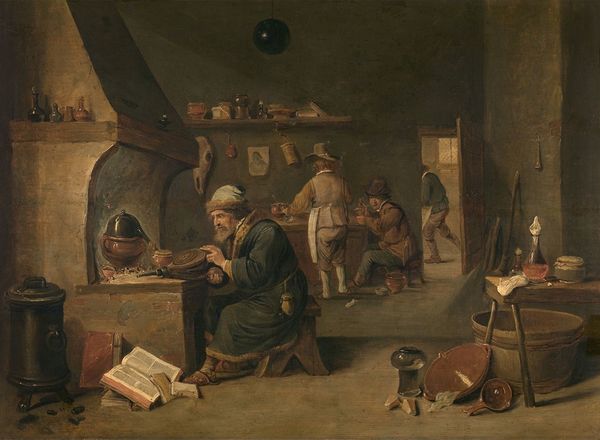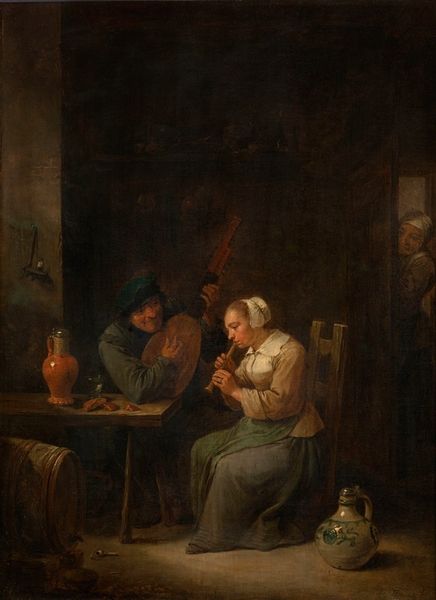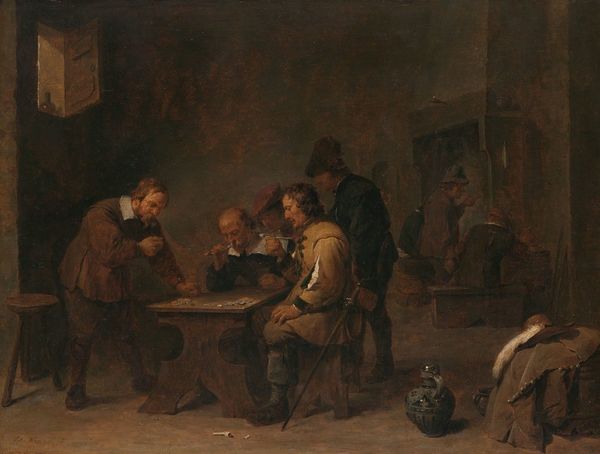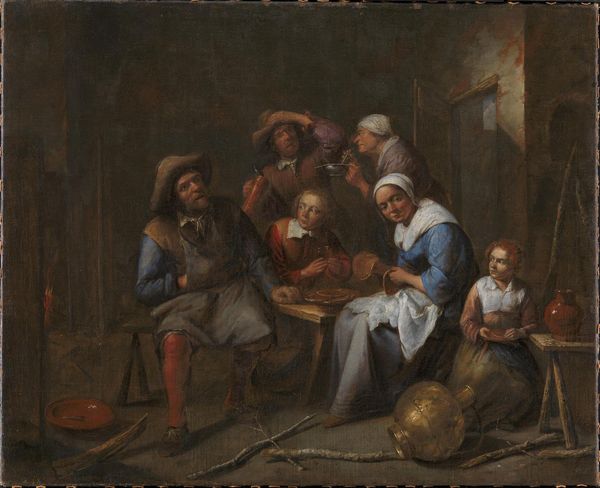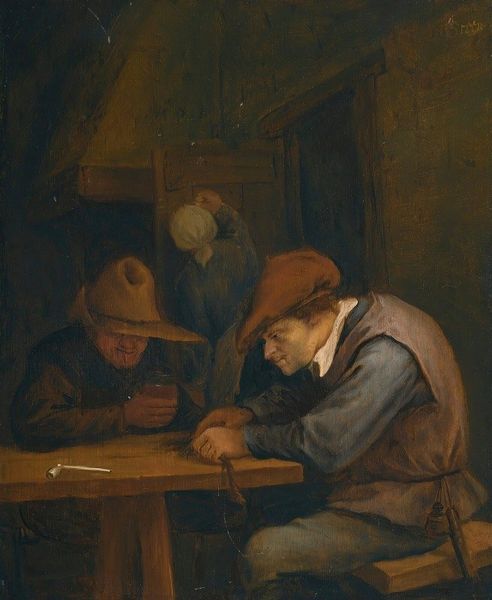
oil-paint
#
portrait
#
figurative
#
baroque
#
oil-paint
#
figuration
#
oil painting
#
portrait reference
#
flemish
#
genre-painting
Copyright: Public Domain: Artvee
Editor: So here we have "Bagpiper in an Inn," painted around 1635-1645 by David Teniers the Younger, done in oil. It feels very grounded, like a snapshot of everyday life. How do you interpret this work? Curator: It's fascinating to consider this scene through the lens of social history. Teniers wasn't just painting a bagpiper; he was capturing a specific moment of communal gathering, likely a working-class tavern. How does this representation reinforce or challenge societal views on class and leisure during this period? Editor: That’s interesting. I hadn't thought about the class aspect. The figures inside seem engrossed in their own activities, somewhat removed from the bagpiper. Is this separation significant? Curator: Absolutely. This segregation could symbolize the different ways people experience leisure and belonging based on their social standing. Teniers's realism invites us to examine the power structures inherent in these spaces, consider who is included and who is marginalized. How do the visual details—the clothing, the setting—contribute to this narrative? Editor: I see what you mean. The bagpiper’s clothing is distinct. So, what’s your overall take on Teniers's intention here? Is it celebratory, critical, or something in between? Curator: It’s complex. While Teniers's paintings often present seemingly simple scenes, they offer a potent insight into the everyday life and societal dynamics. The role of music, for instance, how does that impact a place? Can we see the beginning of cultural stereotypes emerging here? The challenge is to unpack these layers and ask how this painting speaks to issues of identity and representation that still resonate today. Editor: This has really broadened my perspective. Thanks! Curator: Mine too! Thinking about art with you makes it vibrant and fresh.
Comments
No comments
Be the first to comment and join the conversation on the ultimate creative platform.
